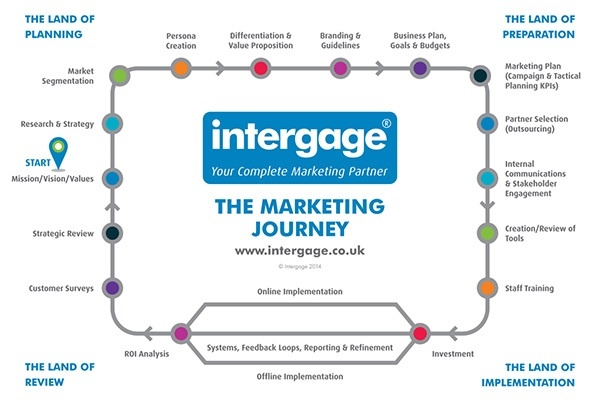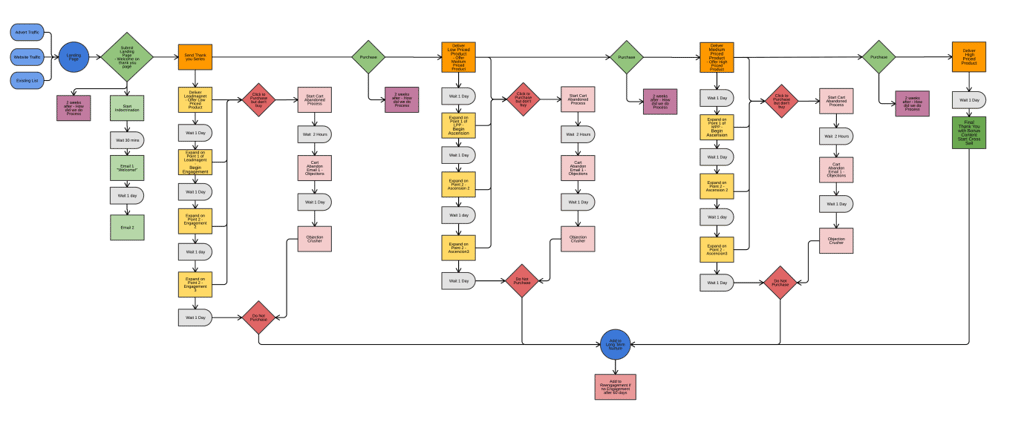What is Lead Nurturing?
“Excuse me mate, I couldn’t help noticing that your chariot wheel is a bit out of whack. It might come off in a charge through the Red Sea: Let me know if you’d like me to replace those spokes for you. In fact, if you get it to me this week, I’ll sharpen up the scythes on the wheels too.”
Maybe not a conversation that an ancient Egyptian carpenter had with one of the Pharaoh’s soldiers, but the point is lead nurturing is something that has been happening since the earliest days of commerce.
It is simply looking after your potential customers in a way that leaves them knowing, liking and trusting your brand.
Why Use Lead Nurturing?
According to the Annuitas Group, nurtured leads make 47% larger purchases than non-nurtured leads. And, according to Gleanster Research, only 25% of your leads are sales-ready.
In addition, a massive 50% of your leads are qualified but not ready to buy from you. So how should you look after them – call them each month to see if they’re ready?
No, there’s a better way.
What’s exciting right now is that you can apply processes and software to automate this which means a lot of the work of looking after customers who aren’t quite ready to buy can be done by the marketing automation system.
This means that, once finely tuned, you can scale up your lead generation machine because it doesn’t depend directly on manpower.
Which Leads need Nurturing?
So, how do you decide (or how does your marketing automation system decide) which leads to nurture? Should we simply blast emails out to anyone who we can identify as a visitor to our website?
Far from it.
A well-structured website can identify the kind of person who has visited us online. Our lead nurturing is then based on that detailed understanding of the customer.
The fourth stop on the marketing journey (shown below) is to build up detailed personas of the kinds of decision makers and influencers that we want to help.
We then build the content of our website to deliver specific messages to those personas, in their language that addresses their issues.

We then combine this with some canny keyword research and a content marketing strategy (mainly blogging) which attracts these audiences at the various stages of their buyer’s journey.
We get them to cross the anonymity threshold with an irresistible content offer (download this e-book on the top ten most effective ways to maintain your chariot).
So now we know who they are, what kind of content they have responded to, what kind of role they might play in the buying decision, how many pages they have visited on the website and where they are in the sales funnel.
Ladies and gentlemen, we have a lead.
Let's have a look at the Old Scoreboard
All of the characteristics described above can be used to (automatically) score the leads. What’s more, we can track them across the blog and see if they have opened and clicked through the links in emails. So we can configure a lead scoring system that takes these things into account:
Contact information - The more contact information they are happy to share with us the higher the lead score.
- Job role – Are they one of our target personas who will make the decision to buy or recommend. Or are they more junior? Lead scoring can be applied accordingly.
- Geography – Are you only selling to the UK? Low (or negative) scores should be applied to leads from anywhere else.
- Events attended – If they have taken the trouble to meet with you in an online webinar or face to face event, then that shows a deep level of engagement – high scores all round.
- Pages visited – Have they just been to your home page? OK, that’s interesting. But if they’ve been to 17 different pages ending up on your implementation landing page, they should get credit for each page and for each type of page they visit.
- Downloads – Has your lead just downloaded your “Chariot maintenance Privilege Plan Comparison?” The chances are they are seriously considering a purchase and should be scored appropriately.
- Email engagement – Do each of your marketing emails get opened? Does the contact click through to your content on the website? This shows a high level of engagement and should have a high score to match.
So, by using lead scoring, our contacts each have a score that is based on their behaviour across our digital marketing platforms. So what is our most effective tool to contact them?
How Does Email Marketing Enable Nurturing?
Far from being ‘dead’, email is exactly the right channel for marketing communications. 74% of consumers prefer to receive commercial communications via email.
So what kinds of content will you send to your leads?
It should depend on who your lead is (check the personas) and where they are in their buying journey (or your sales funnel). You’ll want to build a series of lead nurturing emails which gently pull your leads further down the sales funnel (or help them to qualify themselves out).
So what kinds of emails should you send?
Let’s keep in mind that we want our audience to know, like and trust us more at the end of the experience, so the best kind of email is something which adds value to their world. The email needs to tell them something that they didn’t know. Help educate your audience – be useful to them.
Any emails you send should also be encouraging a closer relationship between your brand and the contact. Invite them to look at your blog posts, subscribe to your email alerts or newsletter, and follow you on the various social media channels.
Marketing Automation Will Help
So email is going to be the primary delivery mechanism. But hard work and deep thinking also need to go into automating this. We have multiple audiences landing on our online properties at various different stages of their buyer journeys.
How do we ensure that we look after them and nurture them along the way?
This is where marketing automation will help. We’ll need to build a nurturing process that might look like this. Different nurturing processes can be triggered depending on the audience’s behaviour in response to our emails.

And Finally
One last word on the language we use. Let’s remember that Lead Nurturing is all about precious potential customers – people.
There’s a danger of dehumanising them when we talk about nurturing leads or nurturing data. What we are trying to nurture is a human relationship, making it as personal, as thoughtful and as responsive as it can be.
That ‘thoughtful’ part is key because one of the biggest challenges of undertaking a Marketing Automation project is putting a great deal of thought into what exactly we want those automated processes to be.
How will we map out the process of nurturing our customers’ interest and our fledgeling relationships with them? That is at least a day workshop in itself…
I’ve just worked out who the ancient Egyptian chariot maintenance man is. There is a sign up outside his workshop gates:
“Chariot Maintenance. No appointment necessary. Just toot and come in”
Toot-and-come-in… anybody?
OK, well if you'd like to know more about Inbound Marketing why not download our latest e-book.




